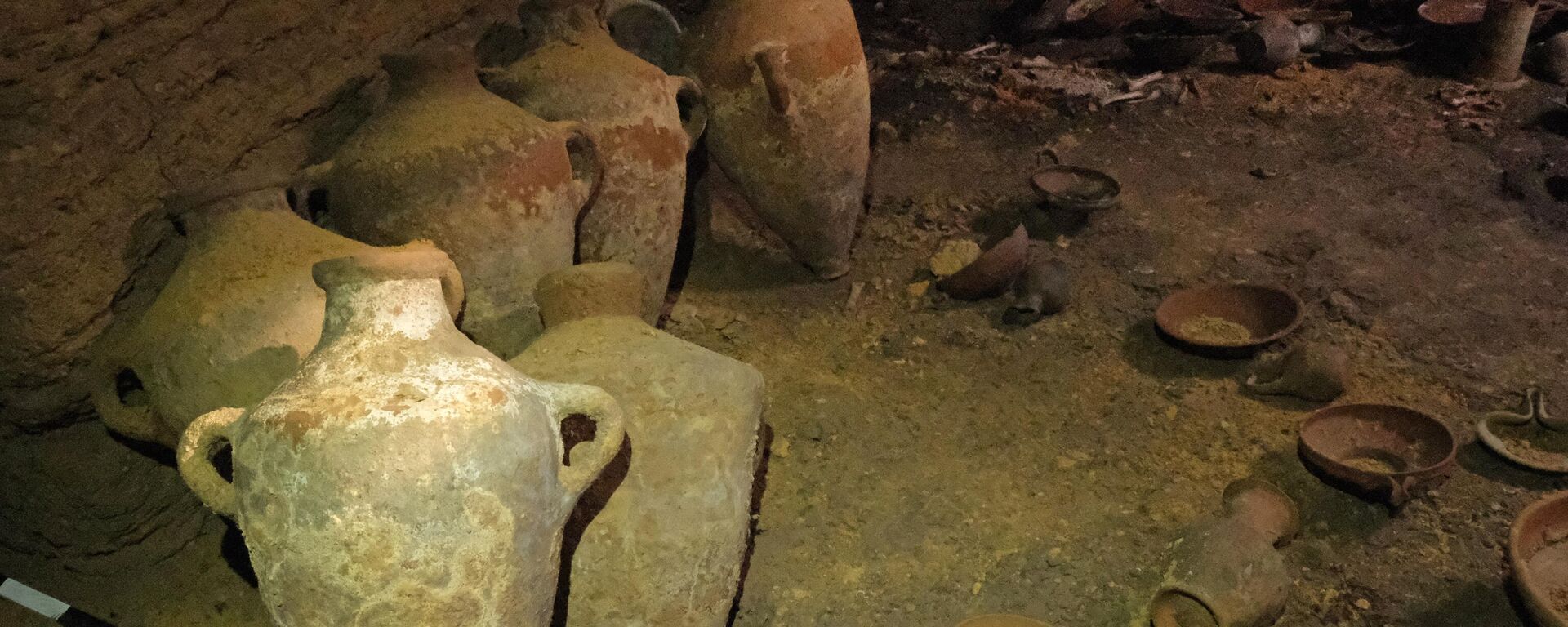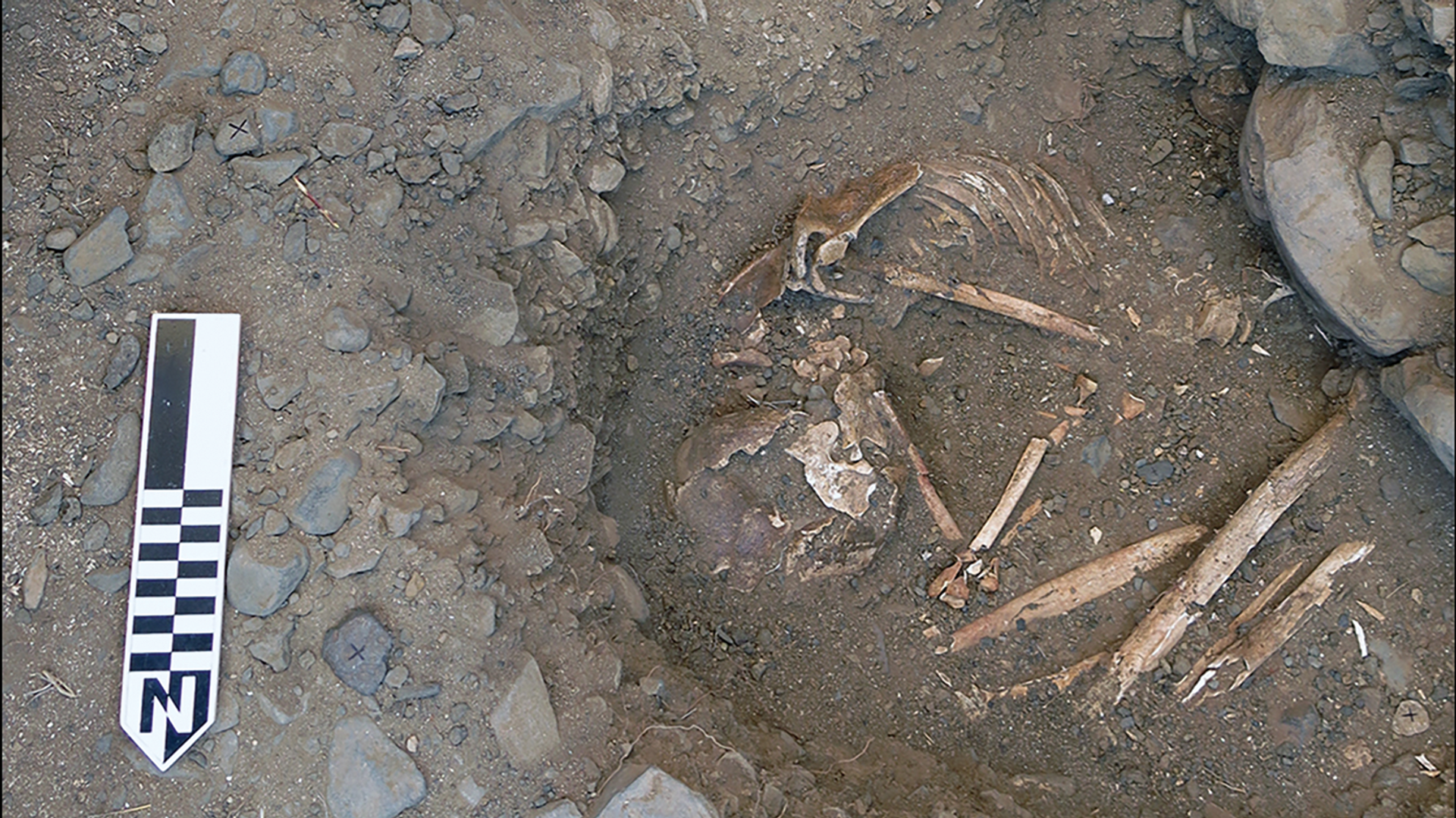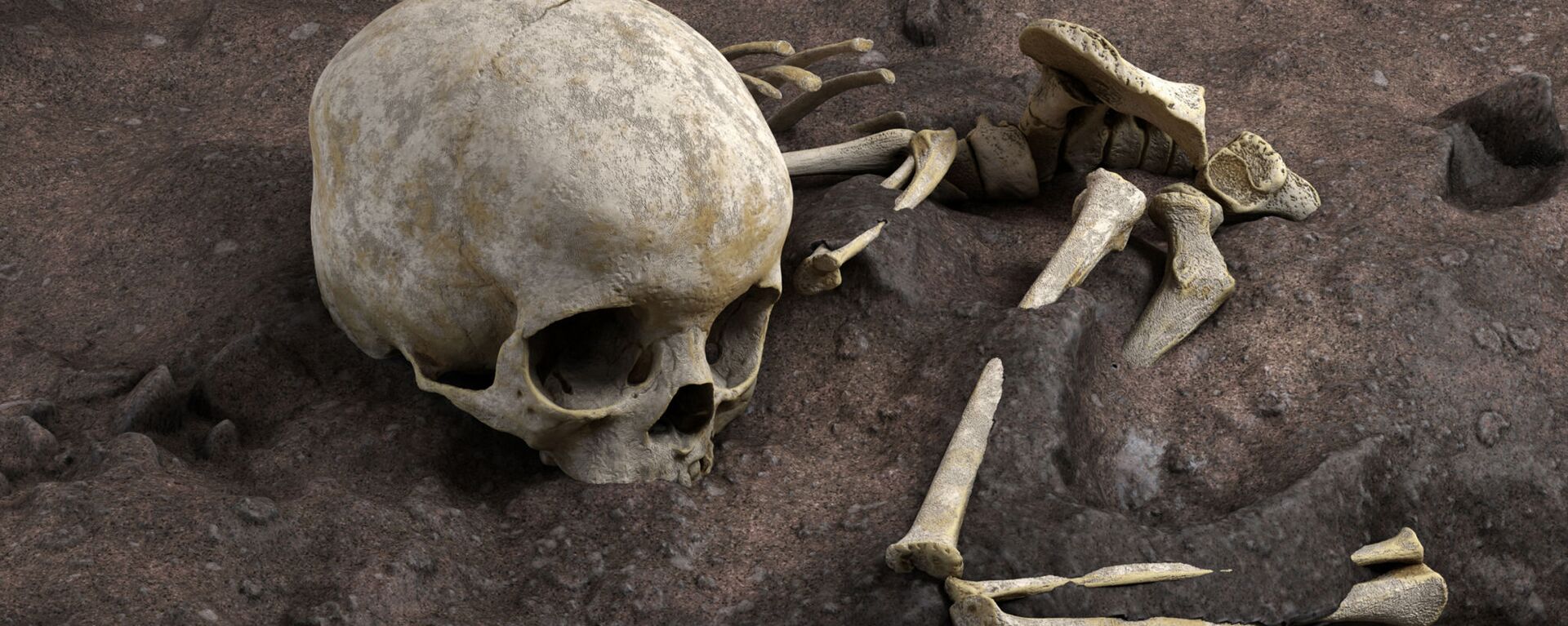https://sputnikglobe.com/20221214/archaeologists-discover-5000-year-old-cemetery-in-lake-turkana-kenya-1105447742.html
Archaeologists Discover 5,000-year-old Cemetery in Lake Turkana, Kenya
Archaeologists Discover 5,000-year-old Cemetery in Lake Turkana, Kenya
Sputnik International
A 5,000-year-old burial site was discovered by archaeologists on the eastern part of Lake Turkana in Kenya as part of the the Jarigole stone pillar site.
2022-12-14T13:55+0000
2022-12-14T13:55+0000
2022-12-14T13:55+0000
africa
archaeology
east africa
kenya
cemetery
ancient
ancient tombs
ancient treasure
ancient history
https://cdn1.img.sputnikglobe.com/img/07e6/0c/0e/1105449438_0:972:1583:1862_1920x0_80_0_0_b63700529b55ed2afb4e70b2d6fb1a92.png
A 5,000-year-old burial site was discovered by archaeologists on the eastern part of Lake Turkana in Kenya as part of the the Jarigole stone pillar site.Along with the neighboring sites, Jarigole, which consists of 28 basalt megalithic pillars as well as an oval stone platform and mound, was previously considered an ancient astronomy site. Later, after partial human remains were discovered there during the Eighties and Nineties excavations, researchers suggested that it was a secondary cemetery – meaning that cadavers buried elsewhere were reburied at Jarigole.Now, once it became clear that the cemetery contains whole bodies along with disjointed skeletal remains, the site is considered a primary and a secondary cemetery simultaneously. The discovery indicates that the burial site was well-planned by members of a complex pastoralist society.According to the researchers, Jarigole and Lothagam North – which is on the opposite side of the lake – bear many similarities, both being created through labor-intensive construction according to a "predetermined plan". Those who utilized the cemeteries lived within a few days’ walk from them, meaning that funerals "were important enough for people to cease other activities and travel whenever a death occurred".According to radiocarbon dating, all of the region's burial sites appeared roughly 5,200 to 4,200 years ago. This was a time when cattle, sheep and goats were introduced to those places, suggesting that the pillar sites were created by early herders.Dr Ebeth Sawchuk, one of the expedition's members, noted that in contrast to the neighboring sites, Jarigole was largely understudied – until now.There is much yet to learn about the site. For instance, it is still unclear how much time passed between a person's death and their burial at Jarigole.Numerous pottery items were discovered at the site, including a mysterious phallic bottleneck. The artefacts are objects of future research.
https://sputnikglobe.com/20210507/researchers-discover-78000-year-old-human-burial-oldest-in-africa-1082822424.html
https://sputnikglobe.com/20220919/archeologists-find-untouched-burial-cave-dating-to-pharaoh-ramesses-ii-era-over-3300-years-ago-1100940142.html
africa
east africa
kenya
Sputnik International
feedback@sputniknews.com
+74956456601
MIA „Rosiya Segodnya“
2022
News
en_EN
Sputnik International
feedback@sputniknews.com
+74956456601
MIA „Rosiya Segodnya“
Sputnik International
feedback@sputniknews.com
+74956456601
MIA „Rosiya Segodnya“
archaeology in kenya, kenya cemetery, kenya burial site, lake turkana, ancient people in kenya
archaeology in kenya, kenya cemetery, kenya burial site, lake turkana, ancient people in kenya
Archaeologists Discover 5,000-year-old Cemetery in Lake Turkana, Kenya
Northern Kenya has long attracted archaeologists with stone pillar sites, the most famous of which are the Namoratunga and Lothagam North located on the western shores of Lake Turkana. This time, the Jarigole site provided scholars with a valuable discovery.
A 5,000-year-old burial site was discovered by
archaeologists on the eastern part of Lake Turkana in Kenya as part of the the Jarigole stone pillar site.
"The new findings from the Jarigole site resolve long-standing questions about eastern Africa’s earliest monuments and provide insight into the social lives, and deaths, of the region’s first pastoralists," says the study published in Cambridge University's Antiquity Journal.
Along with the neighboring sites, Jarigole, which consists of 28 basalt megalithic pillars as well as an oval stone platform and mound, was previously considered an ancient astronomy site. Later, after partial human remains were discovered there during the Eighties and Nineties excavations, researchers suggested that it was a secondary cemetery – meaning that cadavers buried elsewhere were reburied at Jarigole.
Now, once it became clear that the cemetery contains whole
bodies along with disjointed skeletal remains, the site is considered a primary and a secondary cemetery simultaneously. The discovery indicates that the burial site was well-planned by members of a complex pastoralist society.
"Our findings demonstrate that Jarigole’s construction began with the excavation of a planned mortuary cavity and the building of a surrounding circular stone platform. This platform consists of a series of short, basalt cobble retaining walls with rubble filling the spaces between them," the study says, noting that personal adornments were buried along with their owners, one of whom was found with "more than 100 amazonite and other stone beads near their neck and chest, which were perhaps worn as a necklace."
According to the researchers, Jarigole and Lothagam North – which is on the opposite side of the lake – bear many similarities, both being created through labor-intensive construction according to a "predetermined plan". Those who utilized the cemeteries lived within a few days’ walk from them, meaning that funerals "were important enough for people to cease other activities and travel whenever a death occurred".
According to radiocarbon dating, all of the region's burial sites appeared roughly 5,200 to 4,200 years ago. This was a time when cattle, sheep and goats were introduced to those places, suggesting that the pillar sites were created by early herders.
Dr Ebeth Sawchuk, one of the expedition's members,
noted that in contrast to the neighboring sites, Jarigole was largely understudied – until now.
"Jarigole no longer being an outlier is unsurprising, but it is a big deal. Numerous studies have referred to a 'Jarigole Mortuary Tradition' which, though not completely wrong, was based on incomplete data. The site was never formally published and the field notes are still MIA," she wrote, underlining that new findings help to shed light on the life of ancient Africans.
There is much yet to learn about the site. For instance, it is still unclear how much time passed between a person's death and their burial at Jarigole.
"In addition, we do not know whether funerals were large gatherings or smaller affairs, why individuals were interred in primary versus secondary burials or perhaps scattered in the mortuary fill,” says the paper.
Numerous pottery items were discovered at the site, including a mysterious phallic bottleneck. The artefacts are objects of future research.

19 September 2022, 03:10 GMT






